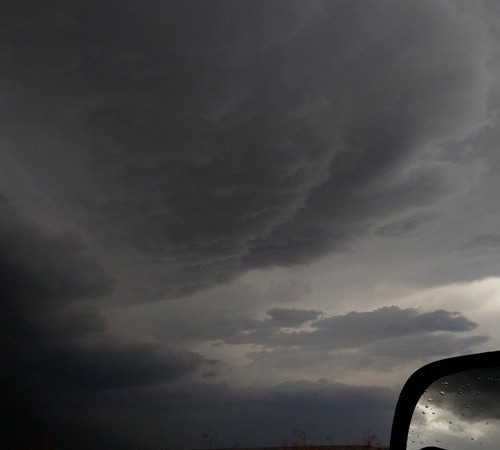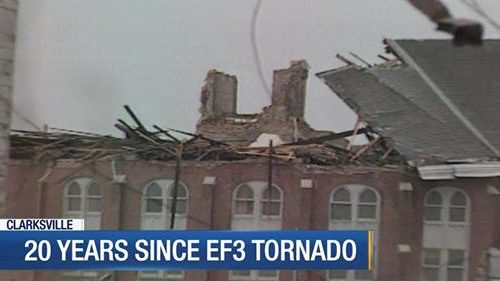There is no luxury of the moment for some, no time to linger in the agony and despair that defined April 27, 2011.
Not for National Weather Service, not for the utility company with thousands of customers not only without power but without the immediate infrastructure to restore it, not for the mayor whose downtown was in shambles and not for the office charged with overseeing emergency operations across the state.
For these agencies, there is always the thought about “…the next time.” However good today may be, tomorrow must be better.
“It just so happened that on April 27, many people did the right thing and, unfortunately, they still died,” said Chris Darden, meteorologist in charge of the National Weather Service forecasting office in Huntsville.
So, yes, there must be lessons learned. There must be a way to do things better.
“Sometimes from a negative can come a positive,” Darden said. “And we’re definitely using this as a learning tool.”
So what did we learn from Wednesday, April 27, 2011?
Weather warnings
Not just the tornado warnings announced minutes before the storm hits but the warnings, or cautions, provided days in advance of a significant weather event are invaluable.
After all, the 2011 tornadoes caught no one by surprise. The community of meteorologists and forecasters knew days ahead of time that danger was imminent and didn’t keep it a secret. If you were paying attention, you knew it, too.
“It’s important to provide warnings to the public to get that information out,” Darden said. “We also learned that it’s important to work with our partners in the media and the emergency management community, the first responders, to get the message out early.
“And I mean days in advance if we expect there’s going to be a big event coming.”
Five years later, weather technology has improved. There are also ongoing efforts to learn more about tornadoes, such as the Vortex Southeast study taking place this spring. Based at the University of Alabama in Huntsville, it’s bringing together the nation’s top tornado researchers.
Maybe you even contributed to the growing effort to learn more about tornadoes.
“Certainly 2011, although it was a tragic day, a horrible day, we learned a lot. We learned a lot actually because we had a lot of video,” Darden said. “A lot of people took video of the tornadoes, which is unusual in the southeast.
“We were able to take that video and look at the radar data and do a lot of comparisons and we have learned a lot about how the terrain affects the tornadoes, how the local environment affects the storms that produce the tornadoes.”
There are efforts to be even more exact in forecasts, in issuing tornado warnings, in anticipating how a storm will behave by understanding the storm itself. An example? The theory that a rotating supercell thunderstorm typically produced a tornado has been dispelled, Darden said. The reality is that only about 5 percent of those storms produce tornadoes.
“April 27, those high-end tornadoes, those are not overly difficult to warn for,” he said. “Those are sort of the ones that are obvious on radar. But the morning storms that day (the weaker tornadoes by scale), those were the more challenging storms to warn for.
“So we’re learning a lot more about those and we’re learning what types of environments – the wind shear in the atmosphere, the instability, the balance within the atmosphere that help produce these tornadoes – we’re constantly learning about those.”
Keeping the power
With the bulk of the April 27 tornadoes centered in north Alabama, the electricity provider for the region absorbed crushing blows to its ability to deliver power to its customers. With transmissions towers mangled, more than 850,000 customers of the Tennessee Valley Authority lost power.
According to TVA, 108 transmission lines were out of service and 75 TVA local power companies were affected. The government-owned utility also reported that 98 percent of its customers had power restored within a week even though 25 percent of the structures and 40 percent of the lines were repaired.
It took more than two months to fully restore the system smashed by the tornadoes.
“What you saw from Russellville up through the Trinity area outside Decatur and East Limestone and on up toward Tennessee, it basically looked like somebody had cleared a straight line for an interstate,” said Clayton Clem, TVA’s vice president for transmission engineering.
The recovery job was so massive for TVA that Clem said the utility moved 441 tractor trailer loads of material.
“From a lessons learned standpoint, we reviewed our steel stocking plan and our emergency material plan, that worked pretty well considering the amount we were able to restore quickly,” Clem said. “We have made some improvements to that in how we handle some of our energy supplies that give us a little more flexibility. We’ve worked on what we consider a broader threat front with grid resiliency where we’re looking not only at storms like this but other events that can cause impacts to the grid.
“One of the pieces of that is we have workforce support focus going on where we’re looking at additional mutual assistance agreements with neighboring utilities that would help us bring workforce into the area more easily in the event of a storm to help support us. Some of the lessons learned from this scale event was just how important the ability to carry your own diesel, your own aviation fuel and your own gasoline with you. As you mobilize the amount of equipment we did, having those supply lines well thought out. So we’ve built that into our emergency planning.”
The recovery effort was not unlike mobilizing an army, Clem said. And that creates logistical issues beyond the task of getting equipment where it needs to go.
“Even the fact that you’ve got to feed that mass of people you bring in,” he said. “You’ve got to feed them, find a place to put them to bed and keep them working.”
Emergency response
As the director of the state’s emergency management agency, Art Faulkner’s job exists for bad days. By definition, the state EMA is the coordinating agency for disaster, preparedness, response and recovery.
Faulkner had all of that on April 27, 2011 – certainly the disaster, the subsequent response and the first hours of recovery. He also had preparedness until the plans blew up by sunrise that morning.
“I’m not quite sure we were prepared for the severity of the storms that hit the state right around sunrise that Wednesday morning,” Faulkner said. “So very quickly, we had to readjust our plan that we had for the day.”
Indeed, the largest storms weren’t expected until later in the day. That early-morning wave of tornadoes, however, scrambled the plans that were in place for the rest of the day.
Faulkner even used the word “chaos” to describe the reaction and response to the unexpected morning storms. Emerging from that chaos, though, was efficiency. Put another way, Faulkner said instinct kicked in.
“The way we were able to respond is because we have a good emergency operations plan,” he said.” And that plan is tested. We continually update that plan and we exercise that plan. So when there was such mass chaos going on, people – especially first responders – they are going to do what they are trained to do and what they have practiced to do.
“That’s one of the biggest lessons we learned – that you have the prepared you have to be trained and exercise your plan and be prepared.”
So those plans today get continual exercise and the instinct of efficient response is groomed.
That’s not to say, however, that there haven’t been changes in operational plans. Faulkner said that instead of all emergency calls being funneled into the statewide operations center in Clanton, seven geographic regions within the state have been established to help triage situations.
Faulkner described those centers as “mini-state EOCs” and they are staffed by employees of “all the critical agencies in the state emergency operations plan.”
“What the purpose of that is that a majority or initial requests are able to be handled at that division setting a lot better than all coming to the state EOC,” he said. “You’ve multiplied your forces from just having a representative from each one of these state agencies in Clanton to a representative here and seven others throughout the state.”
The mini-EOCs in those regions coordinate with county emergency management agencies, which are schooled in the capabilities – and limits – of the regional EOC.
Meanwhile, the state EMA has lost about 20 percent of its workforce since the 2011 tornadoes – shrinking from more than 100 employees that day to about 85 today. It prompts the obvious question: Is Alabama’s emergency management team adequately staffed to handle a statewide emergency?
“It’s our job to take the resources that we have and make it work,” Faulkner said. “We are making it work. Certainly, as with any other state agency, could we use more funds and personnel? Absolutely we could. But we’re going to make it work with what we do have.”
‘Phoenix rising’
By nature, mayors are proud of their cities. But perhaps no mayor can top Cullman’s Max Townson when it comes to touting his town.
“We have actually been thriving since that tornado,” Townson said.
Cullman was one of the state’s largest cities that absorbed a direct blow from a severe tornado – an EF-4 that seemingly dynamited downtown. In still one more remarkable detail from that day, the only casualty in Cullman was a woman with a broken leg and broken hip.
As Townson put it, his town shook off the effects of the tornado and blossomed.
“On April 27, we got hit with an EF-4 tornado that devastated the downtown area, that destroyed churches, businesses, homes, historical area, everything,” he said. “But that tornado woke up a sleeping giant. We became phoenix rising. In the past five years, we have not ceased.”
Now the town in north central Alabama has a bevy of popular chain restaurants and well as booming retail business, the mayor said. There are also capital plans in place to build a new fire department as well as new facilities for the road department and water department.
Downtown businesses, gutted by the tornado, experienced renewal in part through a financial incentive program the city council approved to encourage those business to invest in their property.
Cullman is “growing by leaps and bounds,” Townson said.
While the story of Cullman’s rebirth is perhaps dramatic, the town’s handling of the tornado may seem mundane by comparison. When Townson became mayor in 2008, he was urged by the Cullman County EMA to take a class it was offering about dealing with natural disasters.
In wake of that class, the city designed a response plan and then put it into action.
“We had it all planned out and it went very smooth,” Townson said. “Our street department, they jumped in there and they started clearing immediately even before FEMA got here. It was devastating but sometimes from these disasters, you learn things and improve.”
Then Townson detailed the backbone of his city, praising the people of Cullman with words that could echo across the state and apply to virtually every community affected by a tornado.
“We saw the true character of the citizens of this community,” he said. “It was neighbor helping neighbor, schools giving out food, churches giving out food, doing laundry for the National Guard that was here. It was an inspirational experience.”
Throughout the month of April, AL.com will be looking back five years later at the April 27, 2011 tornadoes.




